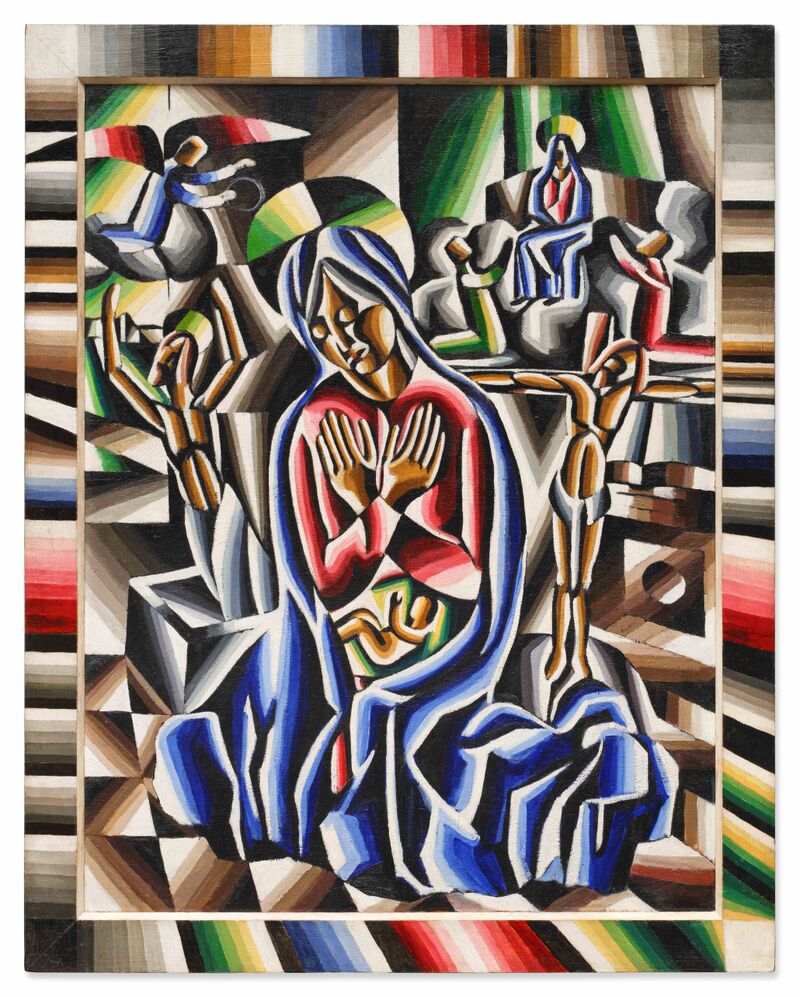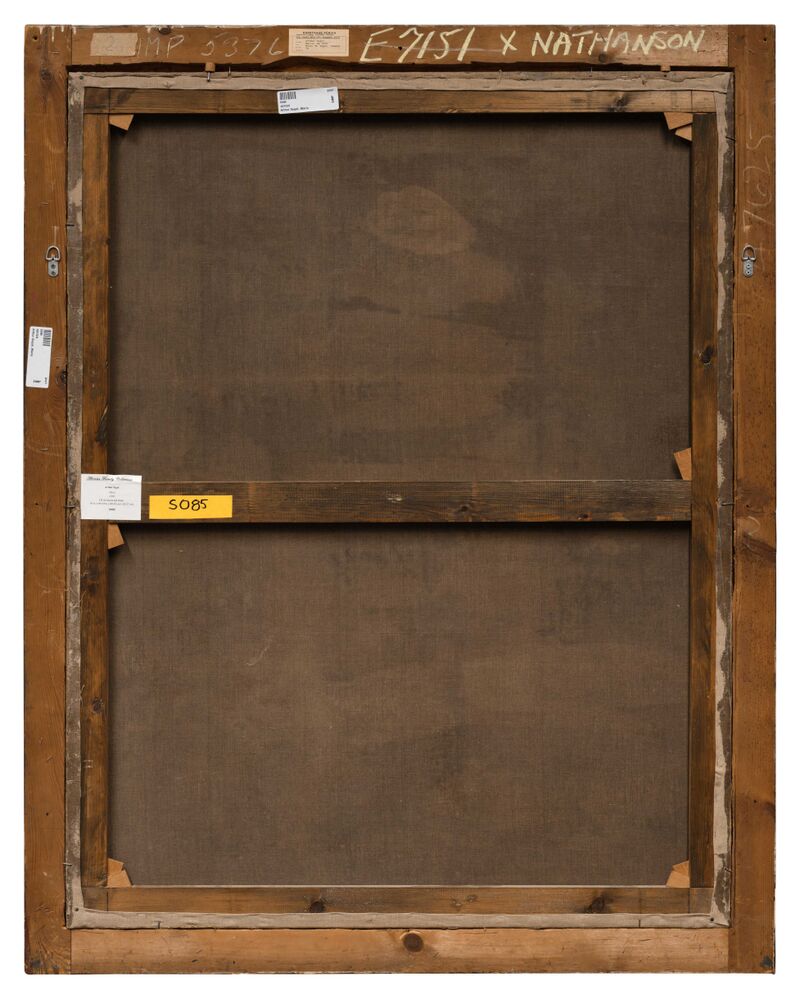Arthur Segal
(1875-1944)
Maria
c. 1925
oil on canvas
160 x 126.4 cm (63 x 49¾ in.)
Marianne Segal, London (acquired by descent from the artist and until at least 1974)
Collection of Richard Nathanson, London
The Abrams Family Collection (Harry N. Abrams and his son Robert Abrams), USA
(exh. cat.), Köln, Kölnischer Kunstverein; Berlin, Haus am Waldsee; Regensburg, Museum Ostdeutsche Galerie; Ascona, Museo Counale d'Arte Moderne; Tel Aviv, The Tel Aviv Museum of Art, Arthur Segal, 1987, p. 344, no. 304
London, The Royal Society of British Artists Galleries, Memorial Exhibition of Oil Paintings, Woodcuts, Sculpture (1894-1944) by Arthur Segal, 1945, no. 268, p. 17
London, The Alpine Club, Arthur Segal. A Selection of Paintings, A Collection of Woodcuts Arranged by Richard Nathanson, 1973, no. 13
Zurich, Kunsthaus, Holzschnitte und Gemälde von Arthur Segal, 1974, no. 79
Maria is a stunning example of the Romanian artist Arthur Segal’s prismatisch or equivalence painting. In prismatisch, the pictorial surface, including the artist’s frame, is divided into a gridwork of uniform schematic fields in which disparate shapes combine to form a compositional whole. Executed circa 1925, Maria, highly stylized and beaming with energy, is among the artist’s most significant achievements. Saturated fields of magenta, olive, lapis and umber collide with stark whites to form a reverent Virgin Mary emanating light.
Prismatisch is a culmination of artistic idioms borrowed from various Impressionist and Post-Impressionist groups that Segal encountered while studying and working across Europe at the turn of the century. In Paris, Segal encountered works by the Impressionists, whose interest in the transient effects of reflected light proved deeply influential to his oeuvre. There, he was also exposed to avant-garde movements, from Cubism to Futurism and Constructivism. Upon traveling to Italy, Segal encountered Divisionism, a technique based on the science of contrasting colours, staccato brushstrokes, and methodical studio-based practice. While in Berlin, Segal joined the emerging Die Brücke and Der Blaue Reiter groups, whose championing of bright, unnatural colours prompted a permanent shift in his palette. Finally, at the De Sturm Gallery in Munich, Segal discovered the pioneering Orphist paintings of Robert Delaunay. Delaunay’s novel use of geometric shapes and carefully placed hues greatly influenced Segal’s egalitarian principle of “equi-balance,” a term which he officially coined in 1916.
Segal often drew upon Christian motifs such as the Virgin Mary and the Crucifixion, as we see in this piece. The Virgin Mary is one of Western history’s most revered symbols of human suffering and salvation and through this Segal contemplates the horrors of and subsequent healing from the Great War – a Byzantine icon or Renaissance altarpiece reimagined for the modern age. This exploration of Christian motifs is not just a subject matter for Segal, but a profound expression of his contemplation on the human condition and the quest for peace, as reinforced by the present work’s rhythmic surface and sublime compositional harmony.
A kaleidoscopically brilliant culmination of the artist as both colourist and philosopher, Maria is a masterpiece within Segal’s inventive body of work. Comparable works by the artist are held in renowned institutional collections such as The Metropolitan Museum of Art in New York, the Art Institute of Chicago, and the Thyssen-Bornemisza National Museum in Madrid.
Price:
$350,000.00 (+5% import VAT)
More artworks by Arthur Segal ▶
You may also like:
Enquire Now
Fill in the form below and we will respond as soon as possible.
Make an offer
Fill in the form below and we will respond as soon as possible.


